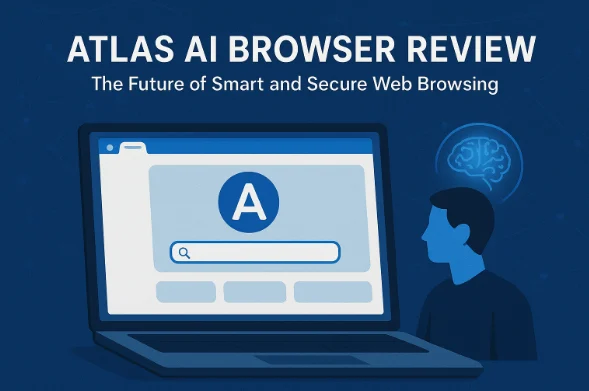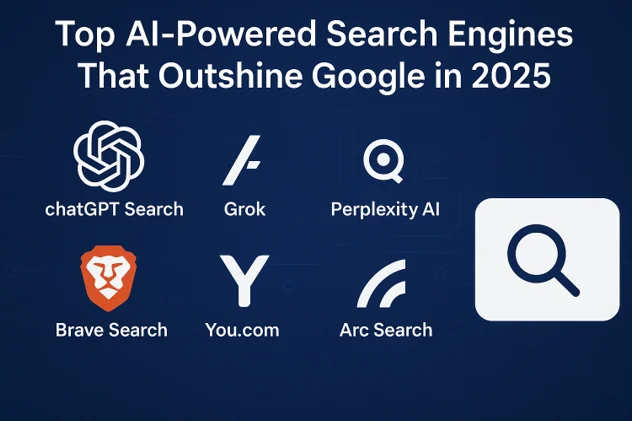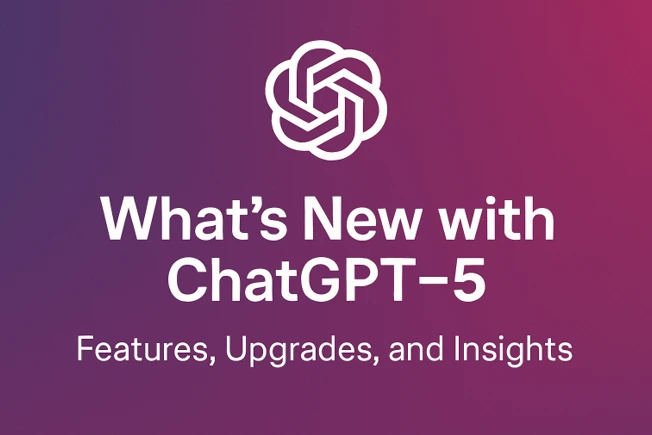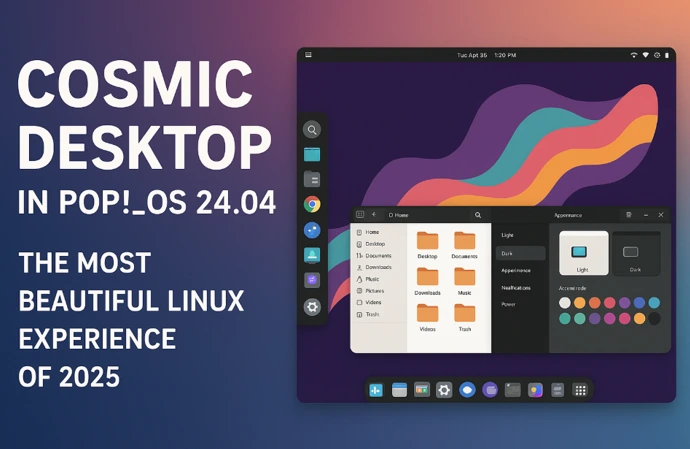
GPT-5 and Beyond: What’s Next in Generative AI?
The world of generative AI is moving at lightning speed, transforming how we work, create, and interact with technology. From the early days of OpenAI’s GPT-1 to the recent release of GPT-4.5, each new model has pushed the boundaries of what AI can do. Now, in 2025, the tech community is buzzing with anticipation for GPT-5, which promises to be a significant milestone. But the story doesn’t end there—generative AI is evolving far beyond GPT-5, with trends like multimodal models, autonomous AI agents, and robotics reshaping industries and society.
In this blog post titled ‘GPT-5 and Beyond: What’s Next in Generative AI?‘, we’ll explore the latest advancements in generative AI and look ahead to what’s coming next.
The Journey to GPT-5: From GPT-1 to the Next Frontier
To appreciate the significance of GPT-5, let’s take a quick look at the evolution of OpenAI’s GPT series:
| Model | Release Year | Key Features |
|---|---|---|
| GPT-1 | 2018 | Introduced transformer architecture for natural language processing (NLP). |
| GPT-2 | 2019 | Enhanced text generation; initially restricted due to misuse concerns. |
| GPT-3 | 2020 | Broad access, capable of generating coherent, contextually relevant text. |
| GPT-4 | 2023 | Multimodal capabilities, processing and generating text and images. |
| GPT-4.5 | February 2025 | Improved pattern recognition, creative insights, and chat performance (OpenAI GPT-4.5). |
Each model has built on its predecessor, bringing AI closer to human-like understanding and creativity. Now, GPT-5 is poised to take this progress to new heights.
What We Know About GPT-5
As of May 17, 2025, GPT-5 has not been released, but there’s plenty of buzz about its potential. According to OpenAI CEO Sam Altman, GPT-5 is expected to launch “in a few months” from April 2025, suggesting a mid-2025 release (Exploding Topics). Unlike GPT-4.5, which was an incremental upgrade, GPT-5 is described as a “frontier model,” meaning it will significantly advance AI capabilities (Botpress GPT-5).
Key expectations for GPT-5 include:
- Unified Capabilities: GPT-5 is likely to integrate conversation, reasoning, and multimodal tasks (e.g., text, images, audio, video) into a single system, reducing the need to switch between specialized models (Promptlayer GPT-5).
- Enhanced Reasoning: Building on models like OpenAI’s o1, GPT-5 is expected to excel in complex problem-solving, making it valuable for fields like science, coding, and law (Forbes GPT-5).
- Improved Reliability and Safety: OpenAI is focusing on reducing hallucinations and ensuring safer AI interactions, with ongoing safety testing potentially delaying the release (Chatbase GPT-5).
However, challenges like safety testing and training with synthetic data could push the release into the second half of 2025. Despite the uncertainty, GPT-5 is expected to set a new standard for generative AI, offering unprecedented efficiency and versatility.
Advancements in Generative AI in 2025: A Transformative Year
While GPT-5 is a focal point, generative AI as a whole is advancing rapidly in 2025. Here are the key trends shaping the field:
1. Advanced Reasoning Capabilities
AI models are becoming smarter at solving complex problems. For example, OpenAI’s o1 model can tackle tasks in science, coding, math, law, and medicine by reasoning through problems step-by-step, much like a human (Microsoft AI Trends). This capability is making AI a powerful tool for professionals who need precise, logical solutions.
2. Multimodal Models
Generative AI is moving beyond text to handle multiple data types. Multimodal models like OpenAI’s Sora (text-to-video) and ElevenLabs’ AI voice generator can process and generate text, audio, video, and images (TechTarget AI Trends). This trend is enabling more immersive applications, from virtual reality to personalized video content.
3. Open Source Generative AI
Open source AI is democratizing access to advanced technology. Platforms like Mistral AI and Stability AI’s Stable Diffusion allow developers to collaborate on AI models, fostering innovation and making AI tools more accessible (TechTarget GenAI Trends).
4. AI-First Application Development
In 2025, generative AI is being integrated into software development from the ground up. This “AI-first” approach is enhancing tools like coding environments and extending to other software, making them more intelligent and user-friendly (Forbes AI Trends).
5. Service as Software AI agents are bridging the gap between software insights and action. For instance, customer relationship management (CRM) systems can now use AI to negotiate deals or customize proposals, automating tasks that once required human effort (Forbes AI Trends). This shift is creating a new paradigm where services are delivered through software.
6. Transformative Impact Across Industries
Generative AI is reshaping industries:
| Industry | Impact |
|---|---|
| Content Creation | Developing marketing strategies, composing music, and creating visuals (Master of Code). |
| Healthcare | Aiding drug discovery and personalized medicine (United Snap). |
| Education | Personalizing learning experiences for students (United Snap). |
| Software Development | Accelerating coding, debugging, and testing (United Snap). |
7. Economic Impact
The adoption of generative AI is driving significant economic benefits. Early adopters are seeing a $3.71 return for every $1 invested, with financial services companies achieving even higher returns (AmplifAI Statistics). This economic potential is fueling investment and innovation.
8. Ethical and Safety Considerations
As AI grows more powerful, ethical and safety concerns are taking center stage. OpenAI has established safety committees to guide responsible AI development, reflecting the industry’s commitment to addressing risks like misinformation and bias (Exploding Topics).
Beyond GPT-5: The Future of Generative AI
While GPT-5 is a major milestone, the future of generative AI holds even more exciting possibilities:
1. Advanced Multimodal Models
Future models will be even better at integrating text, images, audio, and video, creating seamless, immersive experiences. This could transform entertainment, education, and virtual reality, making AI a central part of how we interact with digital content (TechTarget AI Trends).
2. Integration with the Physical World
AI is moving beyond digital interfaces to interact with the physical world through robotics. Foundation models for robotics could enable AI to perform tasks like manufacturing or surgery with human-like precision, revolutionizing industries (TechTarget AI Trends).
3. Rise of Agentic AI
Agentic AI—systems that operate autonomously and collaborate with other AI agents—is on the rise. These systems could automate complex workflows, such as managing supply chains or conducting research, reducing the need for human oversight (MIT Sloan).
4. Ethical AI and Regulation
As AI becomes more autonomous, ensuring it aligns with human values is critical. Governments, tech companies, and civil society will need to collaborate on regulations to address privacy, job displacement, and ethical concerns (AmplifAI Statistics).
Implications for Businesses and Society
For Businesses
Generative AI offers businesses a chance to innovate and stay competitive. By integrating AI into operations, companies can improve efficiency, enhance customer experiences, and develop new products. However, this requires investing in skills, infrastructure, and ethical practices to ensure responsible use (Forbes AI Trends).
For Society
Generative AI has the potential to democratize access to tools and services, empower creativity, and solve global challenges like healthcare access. However, it also raises concerns about job displacement, privacy, and misinformation. Balancing these benefits and risks will be essential for a positive societal impact (United Snap).
Conclusion
The anticipated release of GPT-5 in 2025 is just one chapter in the ongoing story of generative AI. With advancements in reasoning, multimodal capabilities, and open-source innovation, AI is transforming industries and reshaping how we live and work. Looking beyond GPT-5, the rise of agentic AI, robotics, and ethical frameworks will define the next era of AI development.
As we embrace these changes, it’s crucial to prioritize safety, ethics, and inclusivity to ensure AI benefits everyone. The future of generative AI is bright, and by staying informed and engaged, we can help shape a world where AI is a partner in creating a better tomorrow.
Disclaimer
The information provided in the blog post “GPT-5 and Beyond: What’s Next in Generative AI?” is for general informational purposes only and is based on publicly available data, industry reports, and expert analyses as of May 17, 2025. While every effort has been made to ensure the accuracy and reliability of the content, the information is subject to change as new developments occur in the rapidly evolving field of generative AI.
The author and publisher are not affiliated with OpenAI or any other AI development organization mentioned in the post. Any predictions, expectations, or speculations about GPT-5 or future AI trends are based on cited sources and do not represent official statements from OpenAI or other entities. Readers are encouraged to verify information independently and consult primary sources for the most current updates.
The content is not intended to provide professional, technical, or legal advice. Users should not rely solely on this information for decision-making without consulting qualified professionals or conducting further research. The author and publisher are not responsible for any actions taken based on the information provided, nor for any errors, omissions, or inaccuracies in the content.
External links are provided for reference and further reading, but the author and publisher are not responsible for the content or accuracy of third-party websites.
By reading this blog post, you acknowledge that the information is provided “as is” without warranties of any kind, either express or implied, regarding its completeness, accuracy, or suitability for any particular purpose.
Also Read
Smart Rings in 2025: Are They the Future of Health & Notifications?







